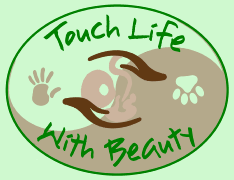Alan Howell Essential Oils
Shechina
21, Chatsworth Crescent
HOUNSLOW
Middlesex
England
TW3 2PE
Telephone:
0208 569 8440
Facsimile:
0208 569 8440
0845 458 5757
0845 458 5757
Telephone and Facsimile
International:
+4420 8569 8440:
Touch Life With Beauty


Shechina
Essential Oils
By Alan Howell
CAPE MAY OIL MONOGRAPH
Coleonema album
Cape May
(Coleonema album) – for the smell of the Cape fynbos
INTRODUCTION
Coleonema album is a fragrant shrub with many medicinal properties. In general appearance
the plant resembles the European May plant. C. album is a dominant plant of the
mountain vegetation of the southern coastal region of the Western Cape. C. album
has been domesticated and planted in many South African gardens for its show of flowers.
During the flowering season the small white petals cover the ground like confetti
after a wedding, hence the colloquial name -
C. album is a medium to large woody shrub with small ericoid (heath-
DISTRIBUTION
Coleonema album is found in the mountain and coastal region of the Western Cape, South Africa.
EXTRACTION
Essential oil by steam distillation of stem and leaves. Sustainably wild-
DESCRIPTION OF THE OIL
Cape May oil is clear in colour with a fresh herby fragrance and an interesting pepper note. The fragrance is typical of the Cape fynbos.
MAIN CHEMICAL COMPONENTS
Myrcene, phellandrene, pinene, ocimene, germacrene-
FLAVOURS
Open for experimentation.
FRAGRANCES
Has an attractive fruity/flowery and pepper note fragrance.
TRADITIONAL USES
There are many confirmed reports of the leaves being used as an insect repellent. Campers rub their bedding with the twigs to repel mosquitoes and ants. A wash made from the leaves is used as a deodorant, and fishermen traditionally rub their hands on the leaves to remove the fishy smell of bait. The leaves add fragrance to pot pourris. There is also anecdotal evidence that leaves added to bath water aids relaxation.
AROMATHERAPY
PROPERTIES: Antiseptic, deodorant, diuretic, febrifuge, insecticide, sedative, restorative.
USES: Colds, flu, sore throat, insect repellent, water retention, relaxing, nervous tension.
CONTRA-
BLENDS: Angelica, basil, bergamot, Cape chamomile, clary sage, fennel, geranium,
ginger, jasmine, juniper, lavender, neroli, patchouli, petitgrain, vetivert, ylang-
GENERAL USE: Mental and emotional. Relaxing to the nervous system and helps to ease tension.
Physical. Helpful to bring down a fever, ease the aches and pains of colds and flu, and bring relief to a sore throat. Has gentle diuretic action, useful for a gentle detox and mild water retention. Tonic to the skin and the body. Will leave the skin invigorated and refreshed. Helps to remove stale and unpleasant smells from the skin, eg. fish and onions. A wonderful insect repellent, used to repel mosquito’s and ants. Can be used as an alternative to citronella or lemongrass oil around a campfire or braai.

| Homoeopathy under threat |
| Essential Oils |
| Carrier Oils |
| Blended Oils |
| Other Oils |
| Essential Oils A - D |
| Essential Oils E - L |
| Essential Oils M - P |
| Essential Oils R - Z |
| Feng Shui Blends |
| Creams & Lotions Ingredients |
| Base Cream Recipe |
| Soap Ingredients |
| Therapists Metal Carry Case |
| 24 Bottle Boxes |
| Bottle & Jar Illustrations |
| Monograph Index |
| Argan Oil Page II |
| Reverend Shianna |
| Page 64 |
| Free Website Listings |
| Alan Howell |
| Alan Howell CV 1 |
| Alan Howell CV 2 |
| Alan Howell CV 3 |